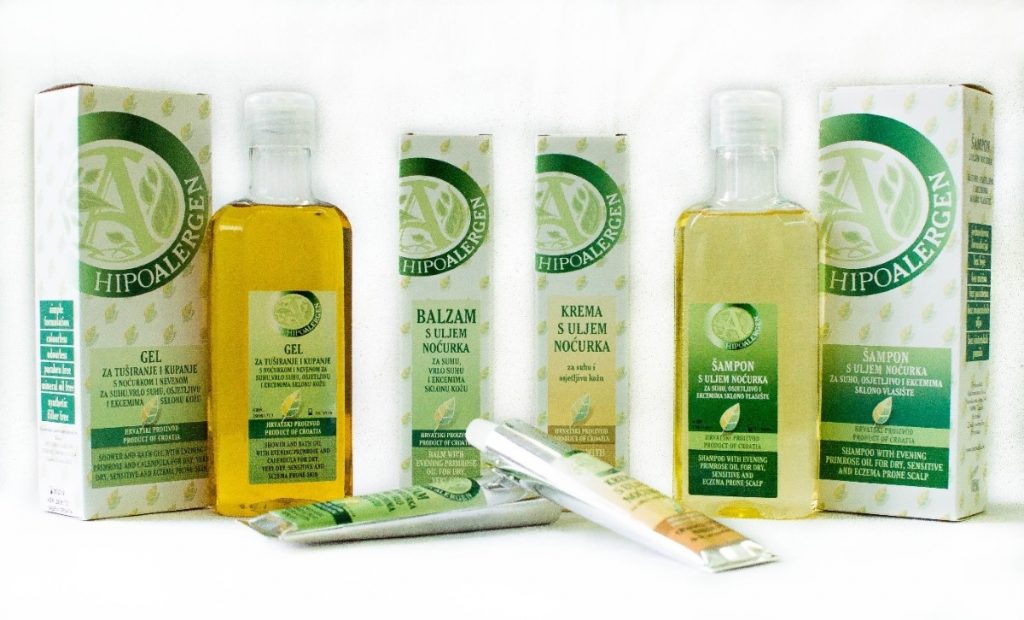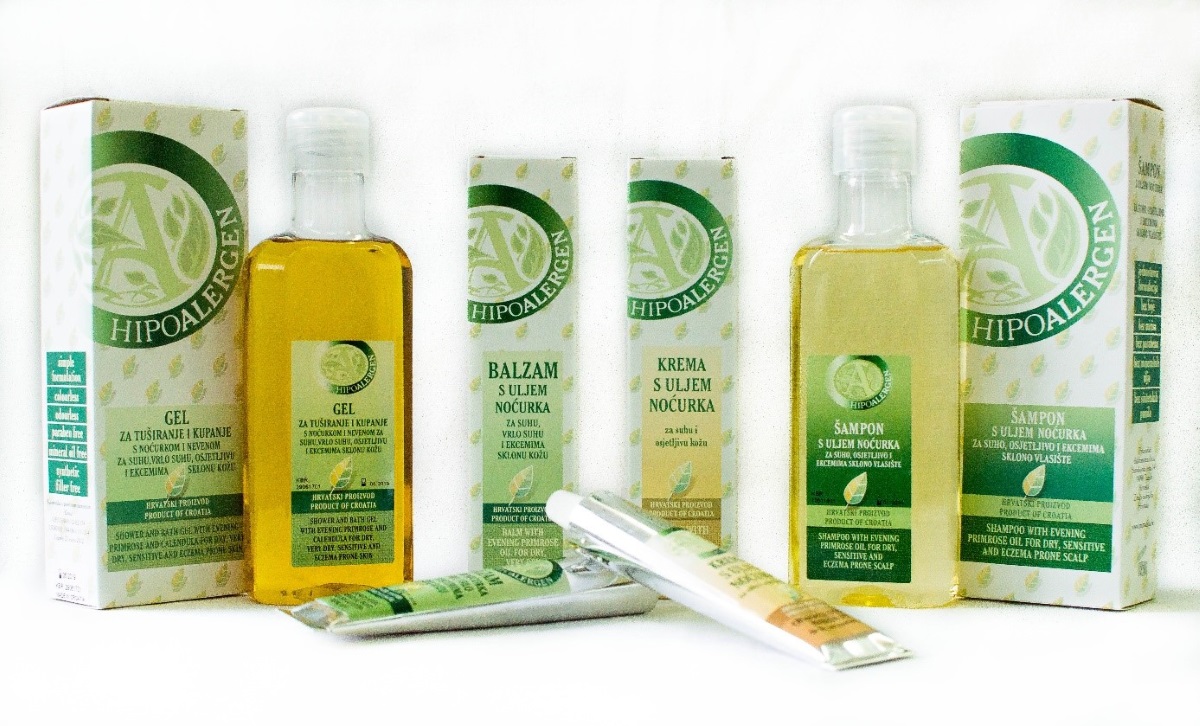Atopic dermatitis is a genetically-conditioned, chronic, inflammatory skin disease characterized by skin dryness, itching and redness.
Usually occurs in early childhood, and in about 90% of cases it occurs until the fifth year. Illness affects the quality of life of the patient and his family.
The most common symptoms are sleep disorder and itching. It is important to note that itching leads to the vicious circle which disrupts the function of the epidermal lipid barrier resulting in increased transepidermal water loss, skin dryness and secondary infections, particularly infection with Staphylococcus aureus.
Treatment of Atopic dermatitis should include the control of itching, reducing inflammation and restoring the epidermal barrier.
Atopic dermatitis reduces the share of all key physiological lipids in the corneal partsr: ceramides, cholesterol and free essential fatty acids.
The lipid imbalance of the corneal part and the lack of ceramides contribute to the creation of a defective lipid barrier of the cornea, which contributes to increased transepidermal water loss and increased permeability of the epidermal barrier.

Traditionally, as an immune disorder, AD therapy includes topical steroids, immunomodulators and sometimes even more aggressive immunosuppressives that are not directed at repairing structural abnormalities of lipid barrier while conventional emollients are not directed to repairing lipid deficiency of the epidermal barrier of the corneal parts. Better understanding of AD pathogenesis has emerged a new non-pharmacological approach to treating AD aimed at restoring the function of epidermal lipid barrier by topical application of physiological lipids: ceramides, cholesterol and free fatty acids in optimum ratio.
In comparison to traditional emulsions, this formulation focuses on the substitution of physiological lipids, particularly ceramides, to achieve the balance of the epidermal barrier of the cornea part. Emulsions with a dominant proportion of ceramides penetrate into the cornea part and they are synthesized in the corneocytes, processed in lamellar bodies and then excreted in the cornea part becoming a part of the dermal matrix.
It is interesting that both cholesterol and ceramides and fatty acids are needed to restore the disrupted function of the epidermal lipid barrier, while each of these three lipids alone is used to slow down the restoration of the barrier. Also incomplete mixture of physiological lipids does not give the desired result of barrier rejuvenation. Maximum efficacy is achieved with the target molar ratio of 3: 1: 1 ceramide, cholesterol and free fatty acids. Some studies have shown that “3” does not necessarily have to be ceramide, either cholesterol or free essential fatty acid in relation to the carrier – “vechiculum”. Emulsion with lipids, besides contributing to the restoration of the epidermal lipid barrier, also normalizes the pH of the skin. The defective pH of the skin is associated with impaired epidermal barrier function, increased inflammatory process and decreased antimicrobial skin defense.
Studies on the use of emulsion with a dominant part of ceramides in atopic patients showed improvement compared to topical corticosteroid therapy in atopic dermatitis. Such emulsions are suitable for patients of all ages from infants and children to adults.
They also present useful therapies at Atopic dermatitis in a way that improves the function of the epidermal barrier, reduces the transepidermal water loss and maintain the moisture of the corneal part.
Adequate application of such an emulsion reduces the need for drug use, limits the strength of eczema in AD. Also, the emulsion with a ceramide hasn’t got side effects except occasional tingling that can occur immediately after application. Therefore it can provide additional therapy for patients of all ages and can be used on sensitive skin parts including face.1
1 Dusan Sajic, MD, PhD; Rachel Asiniwasis, MD; Sandy Skotnicki-Grant, MD, FRCPC, Epidermal Barrier Function in Atopic Dermatitis: Physiologic Lipid Replacement and the Role of Ceramides Skin therapy letter 07/2012; 17(7):6-9.




